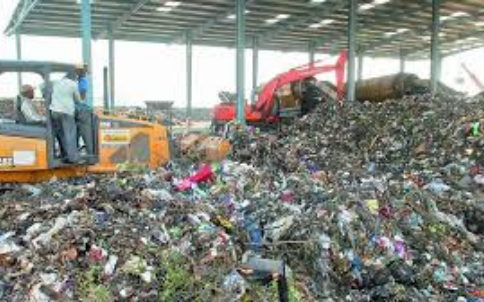Swatch Bharat has, no doubt, contributed immensely improving cleanliness and sanitation in the countryside and urban areas and in changing the mindset of the people. Yet, waste and pollution are the two daunting and persisting causes in the management of urban affairs in India. The conurbations cities like Hyderabad, Bangalore and for that matter all other growing cities and urban areas present a pathetic picture of piled up garbage heaps, hovering toxic clouds and polluted streams. Auxiliaries connecting the main roads, vacant places across the neighborhoods and sites alongside the railway tracks nearing the stations – all present a nauseating and stinking canvas.
Also read: Ageing India looks for a decent living
The total waste produced in Hyderabad per day is 4400 tons excluding construction and demolition waste which is about 650 to 700 TPD. For the year it is 1,09,50,000 tons. Solid waste includes all organic and inorganic waste materials produced by various activities of the society. It consists of all kinds of waste such as municipal solid waste, Industrial waste, hazardous waste and bio-medical waste. According to the physical form of the waste it is grouped into three categories – liquid, solid and gas. The management of Municipal solid waste (MSW) has certain different activities associated with the generation, storage and collection transfer and transport, treatment and disposal. In Hyderabad the management is centered around only four activities, viz. Waste generation, collection, transportation and disposal. It is estimated Hyderabad has 6.8 million population and generates MSW about 0.62 kg of soil waste per capita per day.
Also read: The Lost Horizons
Way back in 1901 the Sanitary Commission urged the old Bombay Presidency hastening of large schemes of drainage and conservancy and clearing refuse far off from city by rail. This was done eventually and the refuse transported outside Bombay was used for reclaiming land. Thus the ‘Deonal’ first landfill came followed and ‘Muland’ by ‘Malad’ landfills. However, Muland landfill was closed as a consequence of the High Court order on environmental and social considerations. In cities where land is generally costly and not available waste is used to refill the low lying areas to increase land space. The Malad landfill showed that the waste filled changed its form to disrupt the everyday functionary of computers in the IT park and also home appliances by the odorous gases emanating and black water springing from the ground fill.
Also read: Pandemic and the Pandora’s box
Studies show that improper solid waste management (MSWM) creates environmental problems and becomes hazardous. About 90% of MSW is disposed unscientifically in open dumps and landfills. Hyderabad Municipal Corporation has developed an integrated model of MSW in accordance with the MSW (M&H) rules 2000. This has a 4 pronged process – reduce, reuse, recycle and resource focusing on basic principles of equity and efficiency. The SWM model depends on basic concepts of life cycle, waste generation and waste management. Of these, the last needs special attention.
Also read: Musings on pandemic impacts
In 2018 Hyderabad got the best capital city award in the country for “Best Solid Waste Management” in Swachh Servekhan Jawahar Nagar is the place used for disposal of solid waste in Hyderabad city. It consists of 378 to 400 acres of land with a huge dump yard and compost facility and treatment to a significant extent. Jawahar Nagar has a vast landfill area. Yet, the growth of city and the bylines parallel to the main streets show a different picture to the ‘development tourist’ and ‘evaluators’. While the narratives of pollution and waste are driven by policy imperatives, it is extremely necessary to address the question of “what is to be done” informed by a deeper understating of ‘what is’ and what has been as pointed by researchers. The above aspect of analysis inclusive of social, ecological and management dimensions is still in wanting.
Also read: Peri Urban and Rurban Dreams
Clearly laid regulations and stringent financial penalties for erring individuals and organizations along with sanctions against slackening officials is urgently needed to tackle the problem of waste and pollution in urban areas. The implementing authorities should evolve activity priorities and priority areas once the most pressing priority accomplished the implementation process should move on to the next. Thus, in a time frame these issues have to be tackled, but not in a piecemeal in a haphazard way. Departmentalization and sup-departmentalization of responsibilities at the field level allows the buck to be passed on from one to the other continuously.
Also read: Growth, Poverty reduction and inequality




